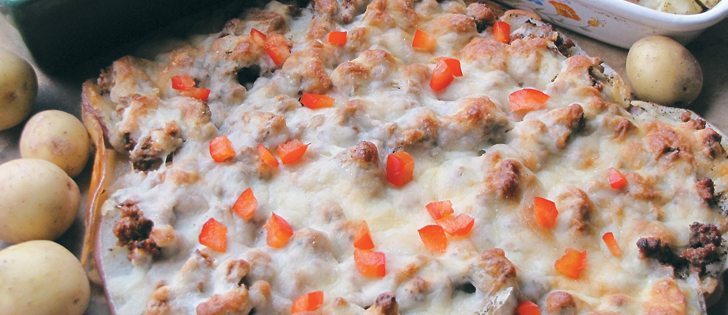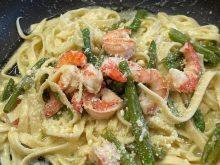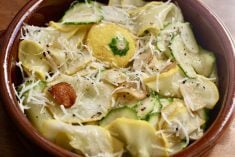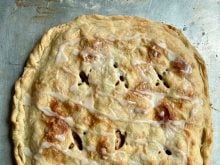From saving the lives of sailors to being the first food grown in space to being an answer to world hunger: the potato has an historic past and a promising future.
Potatoes were first grown about 7,000 years ago in the poor soil and harsh climate of the South American Andes Mountains.
The Spanish introduced them to Europe in the late 1500s.
During the seafaring age, it was discovered that sailors who ate potatoes while on long voyages didn’t develop scurvy, a vitamin C deficiency disease. The addition of easily transportable, vitamin C rich potatoes to sea voyagers’ diets saved lives.
Read Also

Know what costs are involved in keeping crops in the bin
When you’re looking at full bins and rising calf prices, the human reflex is to hold on and hope for more. That’s not a plan. It’s a bet. Storage has a price tag.
In 1996, five Norland variety potato leaves circled the Earth for 16 days aboard the space shuttle Columbia. Tubers sprouted In the microgravity environment of space, making the potato the first food ever grown in space.
For more information on this experiment, visit www.engr.wisc.edu.
Potatoes grow more quickly, on less land and in harsher climates than other major crops. They’re easy to grow and don’t require large amounts of water, fertilizer or chemicals to thrive.
Potatoes produce more food than any other major crop because up to 85 percent of it is edible, compared to around 50 percent in cereals.
A single serving contains almost half the recommended daily requirement of vitamin C and a fifth of the recommended daily amount of potassium. They are also low in calories with about 100 per serving. When eaten with the skin on, they are a good source of soluble and insoluble fibre.
They are one of the richest sources of B-complex vitamins such as pyridoxine (vitamin B6), thiamin, niacin, pantothenic acid and folates.
Potatoes also contain adequate amounts of many essential minerals such as iron, manganese, magnesium, phosphorus and copper.
The potato’s ability to produce abundant nutritious food on marginal land with most of the nutrients needed for sustenance has elevated it to the forefront in fighting world hunger and poverty in many developing countries.
Potatoes are sized into four main categories based on their diameter:
- large – three to 4 1/2 inches
- medium – 2 1/4 to 3 1/4 inches
- small – 1 1/2 to 2 1/4 inches
- creamer – 3/4 to 1 5/8 inches
Creamer size potatoes may be from prematurely killed crops or cull potatoes from larger potato production.
Recently introduced on the market are potato varieties that are creamer size at full maturity. These potatoes are thin skinned with a unique flavour and texture. They are sold as red, white or rainbow, which includes red, white, purple and yellow skinned varieties. They are often labelled as baby potatoes.
Little potato poutine
Although not the healthiest combination of foods, poutine can be enjoyed occasionally. These roasted creamer potatoes offer a tasty, lower fat alternative to french fries.
- 1.5 lb. creamer size potatoes .7 kg
- 1 tbsp. canola oil 15 mL
- 1 c. white cheddar cheese or cheese curds 250 mL
- 1/2 – 1 c. beef gravy 125 – 250 mL
- course salt
- fresh ground pepper
Preheat oven to 400F (200C). Cut the potatoes in half and then in quarters if larger. Place oil in a plastic bag, add potatoes and rub to coat with oil. Place the potatoes, cut side down, on a parchment-lined baking sheet and sprinkle with salt and pepper. Cook in the oven for 15 minutes or until golden brown and tender. While the potatoes are cooking, heat the gravy.
Transfer cooked potatoes to an oven-safe dish, top with cheese and return to the oven for five minutes to melt the cheese. Remove and top with gravy. – Adapted from www.littlepotatoes.com.
Little roasted potatoes
Prepare and roast the little potatoes for the above poutine recipe, omit the cheese and gravy and serve lightly seasoned with salt and pepper.
Potato pizza
Potatoes are used to create a gluten free base for pizza. Top the potato base with your favourite pizza sauce, toppings and cheese.
- 2 – 3 large potatoes, unpeeled,thinly sliced
- 2 tbsp. canola oil 30 mL
- 1/2 onion, thinly sliced
- 1 garlic, minced
- 1 handful fresh basil leaves, chopped
Thinly slice unpeeled potatoes, rinse briefly and toss in colander to dry. Add onion, garlic and basil to canola oil in a plastic bag.
Add potatoes and rub to coat with oil mixture. Arrange in two layers with slices overlapping, on pizza pan or stone. Cover lightly with foil and cook in a 350 F (180 C) oven for 15 minutes. Remove foil and allow to brown. Add toppings and heat until they are hot and cheese is melted. – Adapted from www.littlepotatoes.com.
Hearty potato turkey bacon soup
- 4 c. potatoes, unpeeled and cut into 1/2 inch (1 cm) chunks 1 L
- or 1.5 lb. bag little potatoes, cut in quarters .7 kg
- 1 c. carrots, chopped 250 mL
- 4 c. chicken stock plus water 1 L
- 1 c. celery, chopped 250 mL
- 375 g turkey bacon
- 1 large onion, diced
- 2 tbsp. butter 30 mL
- 1/4 c. all-purpose flour 60 mL
- 1 c. 2% milk 250 mL
- 1 tbsp. chives, or green onion, chopped 15 mL
- salt and pepper to taste
Cover potatoes and carrots with chicken broth in a large stockpot, add enough water to make four cups (1 litre), bring to a boil and simmer until tender.
Brown bacon in a large sauté pan over medium-high heat. Remove the bacon, melt butter and sauté the onion and celery until soft, about five to seven minutes. Whisk in the flour and cook for two minutes longer. Slowly whisk in the milk and continue to cook until mixture thickens.
Chop bacon and add to cooked potatoes, carrots and broth. Slowly add milk, onion and celery mixture and add additional water to reach desired thickness. Simmer for 15 minutes, stirring often to prevent sticking. Serve hot.
Betty Ann Deobald is a home economist from Rosetown, Sask., and a member of Team Resources. Contact: team@producer.com.















